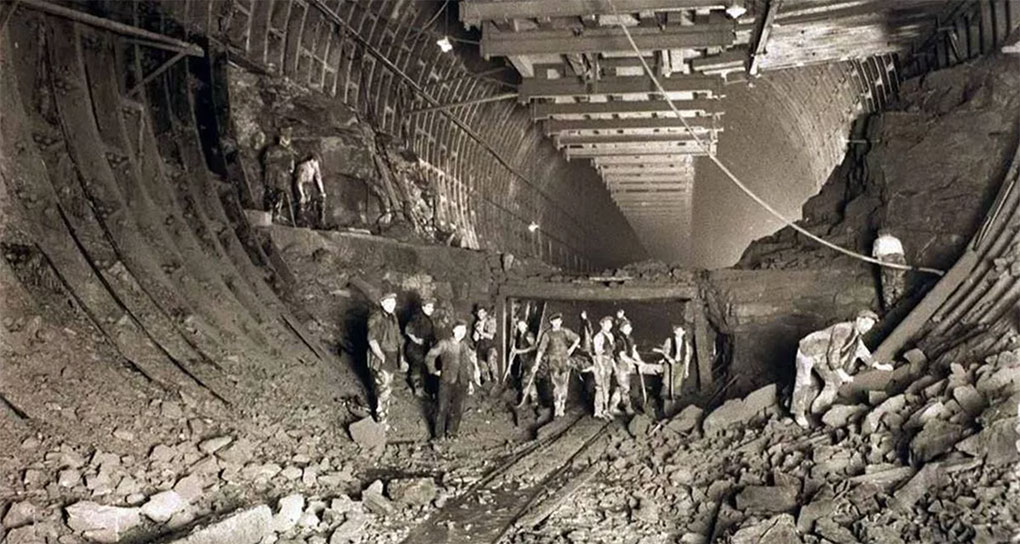
July 18th , 1934 – 91 years ago – the first Mersey Road Tunnel, between Liverpool and Wirral, was officially opened. Known today as Queensway, the project showcased British engineering prowess.
No Black, Asian or Ethnic Minorities were among the 1,700 construction workers, nor were any of them women. Interestingly though, Mary Annie Mercer, the first working-class woman mayor of Birkenhead, played a pivotal role in the completion of the tunnel, credited as “the deciding factor” in overcoming opposition to the project. Though not an engineer, her advocacy for the tunnel’s development highlights the critical role of women in civic leadership and infrastructure planning, even when excluded from technical roles.
Understanding the historical exclusion of women and Black, Asian and Minority Ethnic groups from landmark engineering projects like this helps contextualise current efforts to diversify the profession. Initiatives such as those by the Royal Academy of Engineering (RAEng) and EngineeringUK are working to correct these imbalances, ensuring that future infrastructure reflects the full spectrum of society.
As the demand for skilled professionals intensifies, driven by net zero ambitions, infrastructure renewal, digital transformation and a growing skills gap, there’s increasing recognition that diversity and inclusion are not just ethical imperatives but strategic necessities.
Apprenticeships as engines of equity
Apprenticeships, long seen as a gateway to technical careers, are now emerging as powerful tools to reshape the demographic and cultural makeup of the engineering workforce.
Engineering apprenticeships, like those taught at TTE, offer a unique blend of on-the-job training and academic learning, making them accessible to some individuals who might otherwise be excluded from traditional education pathways.
Despite progress, gender imbalance remains a stubborn challenge. Women make up just 16.9 percent of the engineering and technology workforce, and only 15.7 per cent of engineers in 2024. Black, Asian and Minority Ethnic group representation among engineers and technicians is a mere 8 percent.
MP Sarah Dyke tabled a motion in Parliament at the start of July, highlighting the declining proportion of women in engineering roles and called for greater efforts to retain female talent and support for inclusive policies and educational reforms, as well as the promotion of diverse role models to inspire the next generation.
Apprenticeships could be the key to reversing this trend. Initiatives like the Apprenticeship Diversity Champions Network (ADCN) and targeted outreach by EngineeringUK aim to address these gaps through mentorship, inclusive recruitment, and cultural competency training.
Inclusive apprenticeship design: what works
Successful inclusive apprenticeship programmes share several key features:
- Collaborative partnerships: Working with schools, community groups, and diversity-focused organisations to reach a broader talent pool
- Bias-free recruitment: Using blind CV screening and inclusive job descriptions to attract diverse candidates
- Mentorship and support: Providing apprentices with relatable mentors and peer networks to foster belonging
- Cultural competency training: Equipping staff with the tools to support diverse apprentices effectively
These strategies are not just theoretical, they’re being implemented by companies like BAE Systems, GSK, and B&Q, whose apprenticeship schemes have shown measurable success in improving workforce diversity.
The EDI Engine Report, published by RAEng, highlights that inclusive teams boost innovation, performance, and employee motivation. Elsewhere, the British Science Association Advocacy hosted a Parliamentary event in 2024 to showcase evidence that diverse engineering teams outperform less diverse ones in creativity and growth potential.
Pop culture meets engineering: a new engagement frontier
In a fascinating twist, blockbuster films like Jurassic World Rebirth and Minecraft: The Movie are being used to spark interest in engineering among young audiences. They function as thought experiments, helping children visualise STEM careers and understand complex systems through storytelling.
This approach is particularly effective in reaching girls, who often perceive engineering as “too complicated” or “not for them” – as early as age seven. By embedding engineering themes in popular media, educators and employers can challenge stereotypes and make technical careers feel exciting and accessible.
Apprenticeships and the Net Zero Transition
As the UK moves towards its net zero goals, apprenticeships are being reimagined to support green skills development. EngineeringUK’s recent inquiry calls for increased funding and curriculum reform to ensure that apprenticeships are seen as equal to academic pathways. This includes expanding pre-apprenticeship support, revising accountability measures, and embedding inclusive practices across the education system.
A Call to Action
For visionary leaders in sustainability and education, the message is clear: engineering apprenticeships are not just a workforce solution, they’re a lever for systemic change. By aligning apprenticeship programmes with inclusive practices and strategic goals, we can build a future where engineering reflects the full diversity of society and drives innovation that benefits everyone.
